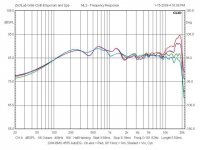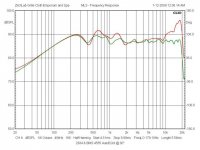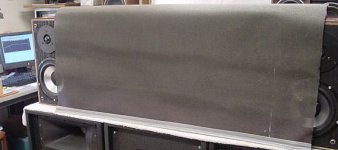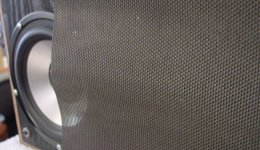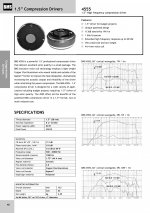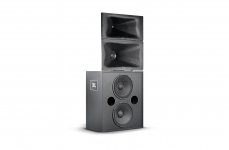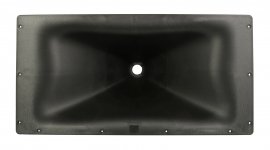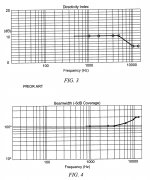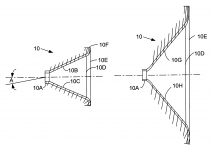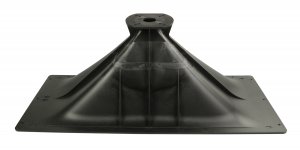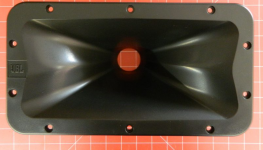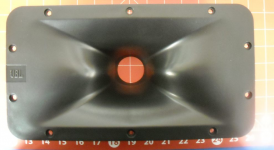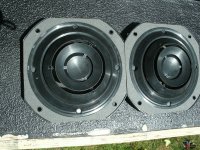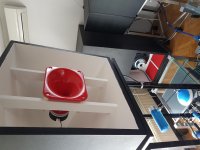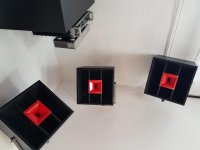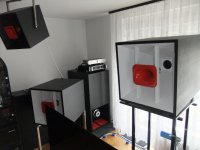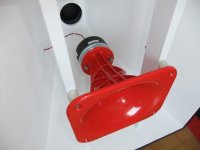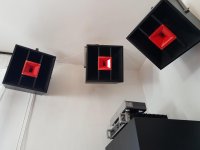To make choices more difficult there is also a waveguide by Faital with slightly wider dispersion for higher crossover frequencies: The STH102
Regards
Charles
Regards
Charles
To make choices more difficult there is also a waveguide by Faital with slightly wider dispersion for higher crossover frequencies: The STH102
Regards
Charles
I suppose you mean STH100?
FaitalPRO | HF Horns | STH100
The STH100 should match the polar response of an 8 and possibly a 10".
This is the horn I would choose for an 1.8k crossover.
This is the horn I would choose for an 1.8k crossover.
Just want to confirm that the STH100 will be a good match for the JBL 3730 at 1,8K?
Thank's again.
Thank's again.
Have you considered using the BMS 4555 with the 2384?
It would bolt right on and it's a much better driver than JBL's own 2418H, that comes with the 1" version of the 2384.
I own the 4554 and while Faitals play better down low (towards 1000Hz), the BMS sounds wonderful from about 1500Hz and upwards.
The 1.8k crossover seems ideal for this driver-horn combination.
Zilch experimented with the 4555 + transparent cloth shading to selectively attenuate the 2384 VHF on-axis.
His comment:
"What I am hearing presently from a single (2384) on the test stand is clean and clear with "big horn" transparency, even though I am only crossing at 1.2 kHz. Listening for it, I do hear the SSC™ compensation as a slight change in timbre moving on-axis, but it may be more prominent to others who hear VHF better; I know it's there.
Needless to say, the imaginary gonadotrophic effect is huge -- these babies BEG to be cranked...."
It would bolt right on and it's a much better driver than JBL's own 2418H, that comes with the 1" version of the 2384.
I own the 4554 and while Faitals play better down low (towards 1000Hz), the BMS sounds wonderful from about 1500Hz and upwards.
The 1.8k crossover seems ideal for this driver-horn combination.
Zilch experimented with the 4555 + transparent cloth shading to selectively attenuate the 2384 VHF on-axis.
His comment:
"What I am hearing presently from a single (2384) on the test stand is clean and clear with "big horn" transparency, even though I am only crossing at 1.2 kHz. Listening for it, I do hear the SSC™ compensation as a slight change in timbre moving on-axis, but it may be more prominent to others who hear VHF better; I know it's there.
Needless to say, the imaginary gonadotrophic effect is huge -- these babies BEG to be cranked...."
Attachments
Last edited:
Just want to confirm that the STH100 will be a good match for the JBL 3730 at 1,8K?
Thank's again.
It will be quite challenging to match another horn with the JBL mid-low section.
Those 2 are designed together and I would stick to that.
The BMS 4555 seems to be the best option, because it resembles the JBL annular drivers.
The Faital HF108 (R) should also work fine.
Attachments
Last edited:
The 2384 is huge, I'm surprise it can that high.
Is it result of compensation and transparent shade?
Ordering 4555 right now!)))
Is it result of compensation and transparent shade?
Ordering 4555 right now!)))
I have a decent enough fir xo for my hf108r based speakers now, although I probably will keep tweaking it for awhile. Anyway, I'll add a vote in favor of the hf108r, hf sounds very nice, and the imaging is very good.
The HF10AK is one of the few 1 "drivers that allows crossover frequencies that even some larger drivers can't handle. At moderate output levels, obviously.
It's a kind of TAD TD-2001/2002 for the poors.
The HF108(R) is more of a pancake type of driver with a shorter conical exit section and wider exit angle (21 vs 31°).
LineSource has provided a nice analysis of both drivers on the first page of this thread.
By the way, LineSource, I'm a big fan of your informative image collages!
Yep , his sketches are always good 🙂
Guys, seems Faitals is the choice but which one for a two way with no fatiguing as per op asking... we often see 4 references used which one can be handled with a passive filter to EQ the circa 1k to 3k hz bump often seen, please ? (a passive serie R//C frequency filter ?). Is there one Faital which has the good trade off over the rest of Faitals
Last edited:
The 2384 is huge, I'm surprise it can that high.
Is it result of compensation and transparent shade?
Ordering 4555 right now!)))
It is indeed a big horn and well designed, based on JBL PT principles.
If you look at the drawings - yes, the 2384 has its own patent - it's clear the throat resembles that of Geddes' OS waveguides.
The 2384 has a slightly increasing directivity to maintain output in the upper octave over longer distances (placed behind screens) in cinemas.
Therefore, you may want to attenuate the 4555's top end a bit. At least there's no shortage of output and extension.
Attachments
Last edited:
Left is JBL #5006815 for STX825 (90° × 50° nominal) and the other is JBL #5006219 for STX815 (70° × 70° nominal).
The smaller PT horns are basically similar to the 2384 and should work, but you have to add some delay to time-align both horns.
I would pick the first horn, because its coverage angles (90° × 50°) resemble those of the 2384.
Here's more info.
A quote:
"From my point of view and for me not going for making exact M2 clones I would argue that it is not worth to go for M2 horns.
The VTX horns behave very well and are easier to equalize."
The smaller PT horns are basically similar to the 2384 and should work, but you have to add some delay to time-align both horns.
I would pick the first horn, because its coverage angles (90° × 50°) resemble those of the 2384.
Here's more info.
A quote:
"From my point of view and for me not going for making exact M2 clones I would argue that it is not worth to go for M2 horns.
The VTX horns behave very well and are easier to equalize."
Last edited:
I spent two years to find this solution.
I'll try smaller WG (JBL#5006219) and see.
Thank's Rob.
I'll try smaller WG (JBL#5006219) and see.
Thank's Rob.
Last edited:
The smaller one has a smoother mouth area, which may reduce diffraction / reflection.
Each of these two waveguides incorporates the latest refinements and can be considered state-of-the-art.
On second thought, the 70° × 70° dispersion might be a better match, as the midwoofer is probably beaming at 1.8 kHz.
Each of these two waveguides incorporates the latest refinements and can be considered state-of-the-art.
On second thought, the 70° × 70° dispersion might be a better match, as the midwoofer is probably beaming at 1.8 kHz.
Last edited:
The 2169H is used with and without phase plug and is a bigger driver than the 195H in the 3730.
I think this discussion on JBL-related stuff is drifting way off-topic.
It's probably best to start a new thread here or perhaps on audioheritage, because that's where most knowledge regarding JBL resides.
I think this discussion on JBL-related stuff is drifting way off-topic.
It's probably best to start a new thread here or perhaps on audioheritage, because that's where most knowledge regarding JBL resides.
Last edited:
The HF10AK is one of the best sounding HF drivers around. At the price it will be very hard to beat. It has a very hi end sound to it and is better than most domes, including the Scan BE tweeters.
Just look at the curves a few posts back, it follows the TAD respectably. You really cant go wrong with it.
It is also used in some very respected hi end home audio designs.
Yes you are right, I have HF10AK in left, center and right horn speakers, for Dolby Atmos 8 horn speakers using HF108.
Attachments
- Home
- Loudspeakers
- Multi-Way
- Faital HF146 vs HF10AK - Top End Performance
